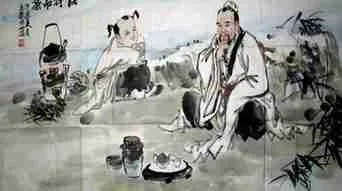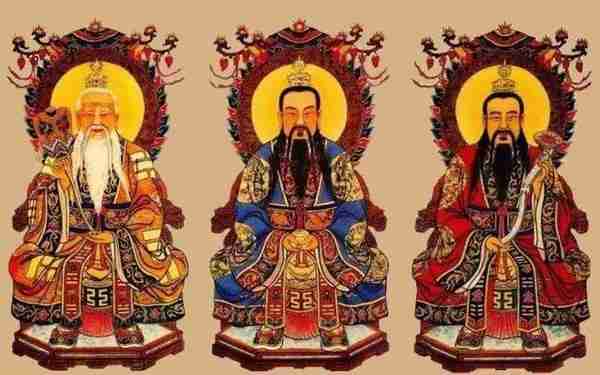Ancient China is easily one of the most culturally diverse parts of Chinese history, and one of the things that makes it rather popular in the cultural front has to do with the fact that ancient China had some of the most endearing religious groups that live on to date, and had Popular Religion In Ancient China Civilization
a great influence on the not just society but also on Chinese governments.
In this article, we’ll take a look at some of the most popular religions in ancient China, along with the influence these religious groups had on the great nation of China.

Buddhism, Confucianism, and Taoism are regarded as the most powerful pillars of ancient Chinese societies. These religions and philosophies not only influenced Chinese societies spiritually but also had a great influence on the government, the arts, science, as well as China’s social structures. And in as much as the teachings and the specific beliefs around these religions and philosophies have been at odds with each other, albeit occasionally, the undoubted truth is that there is a great deal of overlap between these three groups. So, rather than have one of these religions take over and push out the rest of the belief systems, these three philosophies appear to have worked in tandem to influence society in a uniquely unanimous way. There also were times when these belief systems blended.
To understand how this was possible and how these three belief systems make up the most important part of ancient Chinese societies, we’ll take a look at each of these religions individually.
Confucianism

Confucianism is more of a philosophy than it is a true religion, but it had the most profound effect on the Chinese way of life, guiding not just societies but also the Chinese governments. Confucianism continues to play a huge role in Chinese cultures to date.
Confucianism was founded by the Ancient Chinese scholar and philosopher Confucius, who was alive between 551 and 479 BCE. Confucius was not only a philosopher but also a political figure who lived at the time when most of the traditional Chinese principles had started to deteriorate and fade, an event that took place during the leadership of the highly competitive political states. Confucius would then take the old/ traditional religious precepts, and translating them into new guidelines that would turn into societal norms. Through his teachings, he was able to offer guidance to everything around the ancient Chinese lives and way of living; this is from the interactions between individual family members to interactions in public spheres. Confucianism teachings are also credited for shaping the education system for the Chinese, as well as the governance of the states.
The reason for the success of Confucianism has to do with the fact that Confucius saw all aspects of human life as being a set of different important obligations that existed between people and Chinese entities. He noted and taught that rituals were important in conveying mutual dependency between people and entities.
Confucius’ teachings also focused on the importance of humanism, and it covers things like the importance of treating others the way one would want to be treated. Confucianism also emphasized the value to society that comes from everyone being able to fulfill their obligations and roles with kindness and respect, not just to authority but also to everyone else. He taught that doing all these would result in one of the strongest states. His teachings were dominant during the Han Dynasty that ruled between 206 BCE and 220 CE.
Unlike other religions, Confucius didn’t focus on spiritual concerns such as mysticism, the afterlife, goddesses, or gods. This way, Confucianism has always been regarded as a philosophy and not really a religion.
Taoism

Also known as Daoism, Taoism is the other religion that was dominant across ancient China. Taoism is an ancient Chinese religion that came about after Confucianism was established 2000+ years ago.
Though it’s not 100% parallel to Confucianism, Taoism is largely concerned with all the different spiritual elements of life –primarily, the Nature of the Universe, which is also known as The Way. The Way is the primary guiding principle for Taoism, and it teaches about harmony in the natural order, something that exists between the human race and the entire world, which is something that the Taoists always strive to achieve.
In the Taoist belief systems and religious structures, human beings are supposed to accept and to yield to the Tao, and they are to do this by doing natural things while keeping up with the teachings of the Tao. This is the other important aspect of Taoism called Non-Action or Wu-Wei, which means that humans should strive to go with the universe’s true nature, and they shouldn’t strive hard in reaching and meeting their individual desires. As expected, this goes against Confucianism teachings, with Taoists interested in the longevity of the human body and soul, with the attainment of spiritual immortality a huge part of Taoism, against Confucianism which focuses more on the importance of humanistic morality, society, and government.
Buddhism

This is the third primary religious belief in ancient China. Founded by Buddha, also known as Siddhartha Gautama in the 6th Century BCE, Buddhism remains one of the popular religions in Chinese societies to date. Buddhism teachings are based on philosophies that have to do with the attainment of deep (Spiritual) knowledge and personal development. As a result, Buddhists focus on the achievement of enlightenment through practice, meditation, and spiritual learning. Buddhists believe in reincarnation and the impermanence of life, as well as uncertainty of life and suffering. They also believe that the only way of attaining peace is by reaching Nirvana – which is the joyful state that exists beyond suffering.
Though there are different types of Buddhism, two of the biggest Buddhist sects are Mahayana Buddhism, common in East Asia, and Theravada Buddhism, based in Southern Asia, both originated from India.
Interestingly, some of the Buddhist practices are similar to what the Taoists teach, with Buddhist monks using some Taoist concepts when explaining Buddhism to Chinese people. At some point, these two belief systems were in competition with each other for government influence, and as Buddhism grew popular, its concepts would merge with the Confucian and Taoist beliefs, eventually turning into an important of Chinese societies and Chinese governments. They all had an influence on Chinese literature, art, and architecture.
Today, these belief systems – their ideas and values, remain prevalent in Chinese societies, despite their differences and even the occasional contradictions.
